

Mayan sites
![]()
Tikal
Photos from 1988
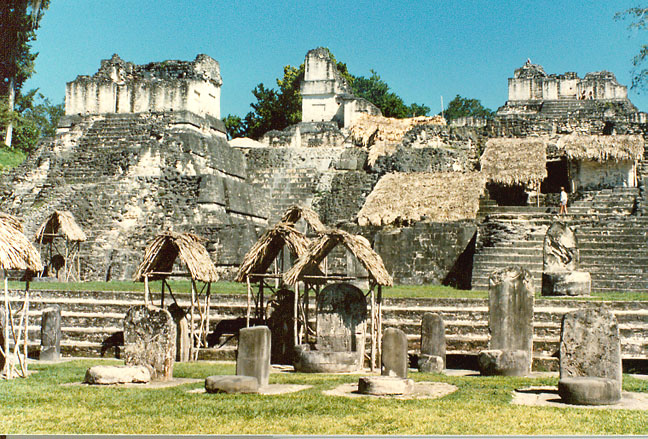
Tikal
Maya civilization arose in the highlands of Guatemala centuries before the birth of Christ, forming thriving city-states and a trading network that stretched over a wide area. Many Maya leaders and people later migrated northward, into the Petén and Yucatán regions, where the civilization developed during the Classic period, between AD 300 and 900. During this period the Maya built impressive ceremonial cities at Tikal, Uaxactún, Quiriguá, Mirador, and at many other sites in northern Guatemala, as well as in Honduras and Mexico.

rises above the jungle
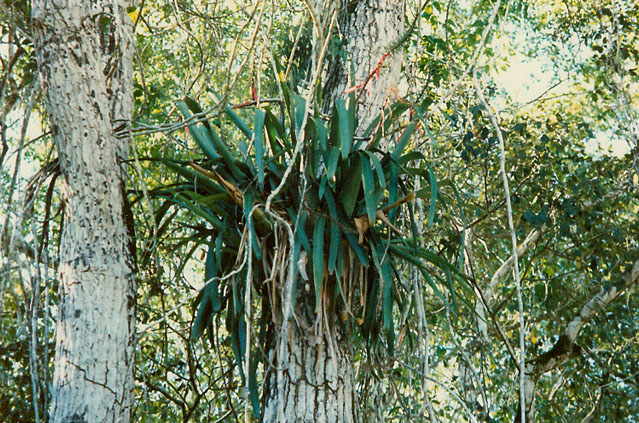
the jungle
These sites featured large temple pyramids and plazas, richly decorated with sculpture and carving. The Maya also developed sophisticated scientific knowledge, a complex calendar, and a hieroglyphic writing system.
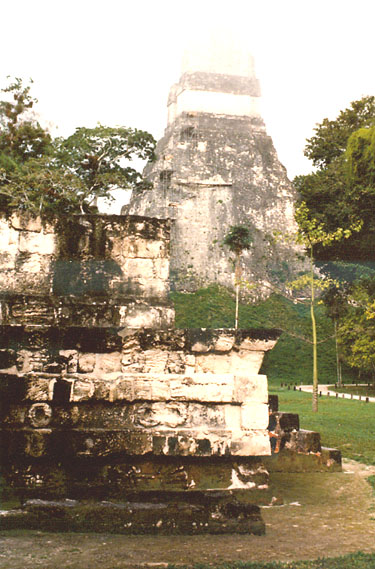
temple pyramid
After the collapse of Classic Maya civilization about AD 900, the Maya established new cities further north in the Yucatán Peninsula, which was the center of the Maya world during the Post-Classic period (AD 900 to 1521). Those Maya who remained in the Guatemalan highlands never achieved the scientific or architectural magnificence of the Classic or Post-Classic city-states, but their civilization survived longer. When the Spaniards arrived in the 16th century, several populous nations of Maya descent, notably the Quiché, the Cakchiquel, and the Zutujil, occupied the Guatemalan highlands.
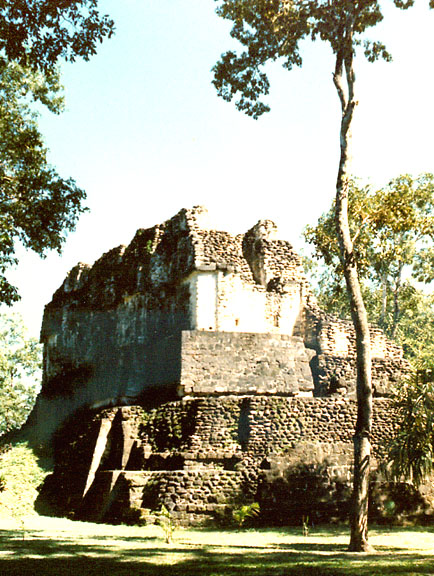
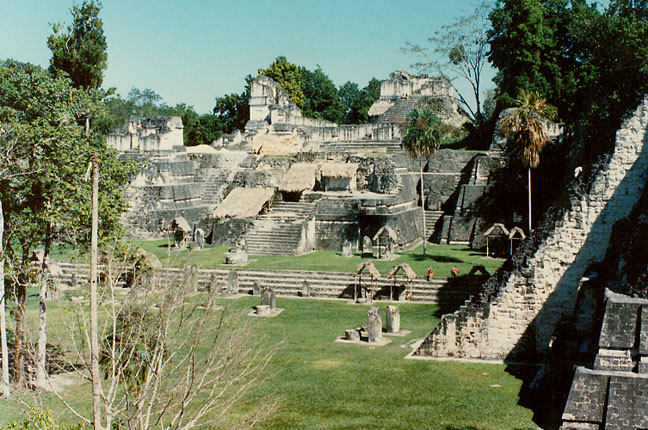
temple platforms
About 600 BC the Maya lowlands experienced a large and rapid population increase. The area, which was dotted with hundreds of small farming communities, saw powerful chiefdoms emerge beginning about 400 BC. These chiefdoms were based at various sites, including El Mirador, Tikal, Cerros, Becan, and Dzibilchaltun, which developed into ceremonial and population centers with tens of thousands of residents. Enormous temple platforms and spacious plazas were built to reflect the power and authority of the Maya rulers. Pottery and other crafts were created by specialized artisans and were uniform throughout the area.
Text from Microsoft Encarta
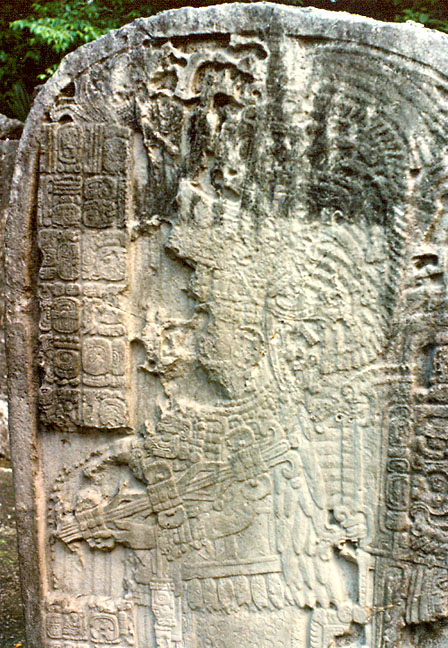

Mayan stelae
![]()
Uaxactún
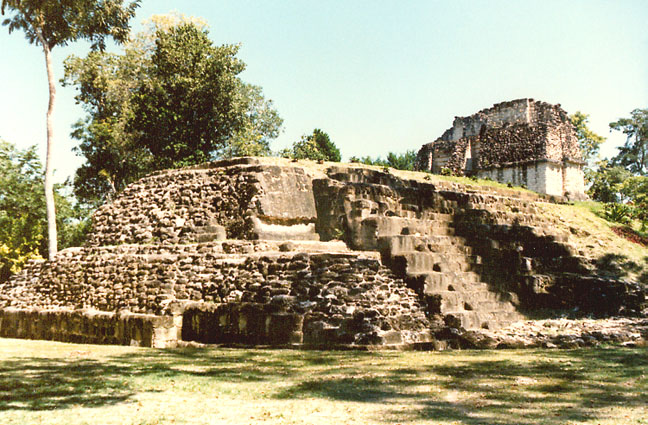
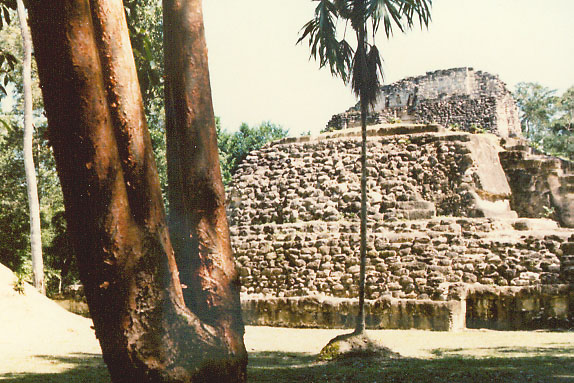
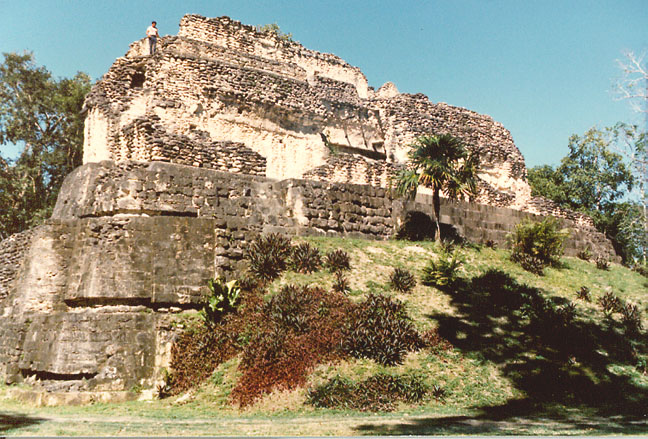
![]()
Yaxha
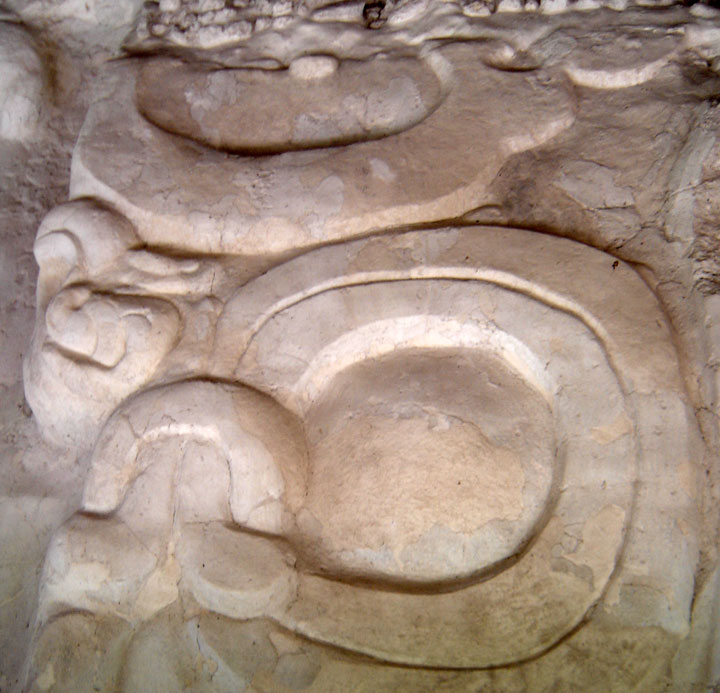
![]()
Quirigua

the site
Inhabited since the 2nd century A.D., Quirigua had become during the reign of Cauac Sky (723-84) the capital of an autonomous and prosperous state. The ruins of Quirigua contain some outstanding 8th-century monuments and an impressive series of carved stelae and sculpted calendars that constitute an essential source for the study of Mayan civilization.
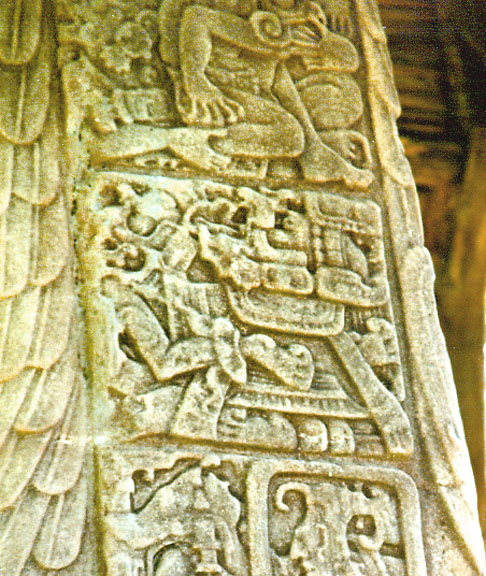
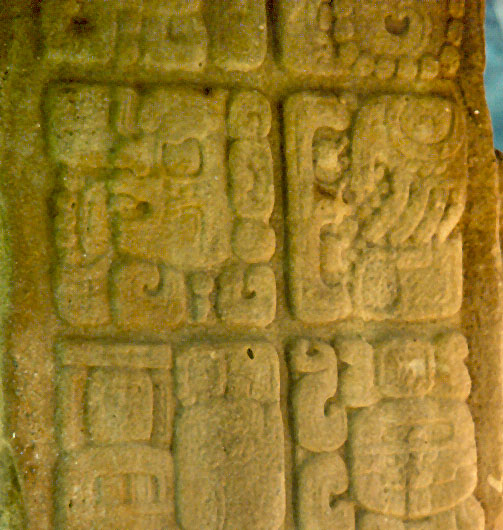
detail from the Mayan markings on the stelae
![]()
Return to Central America page
![]()